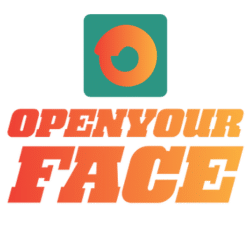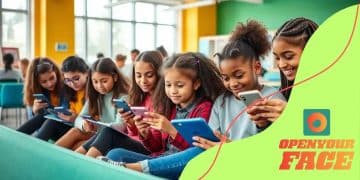Benefits of personalized learning paths for K–12 students
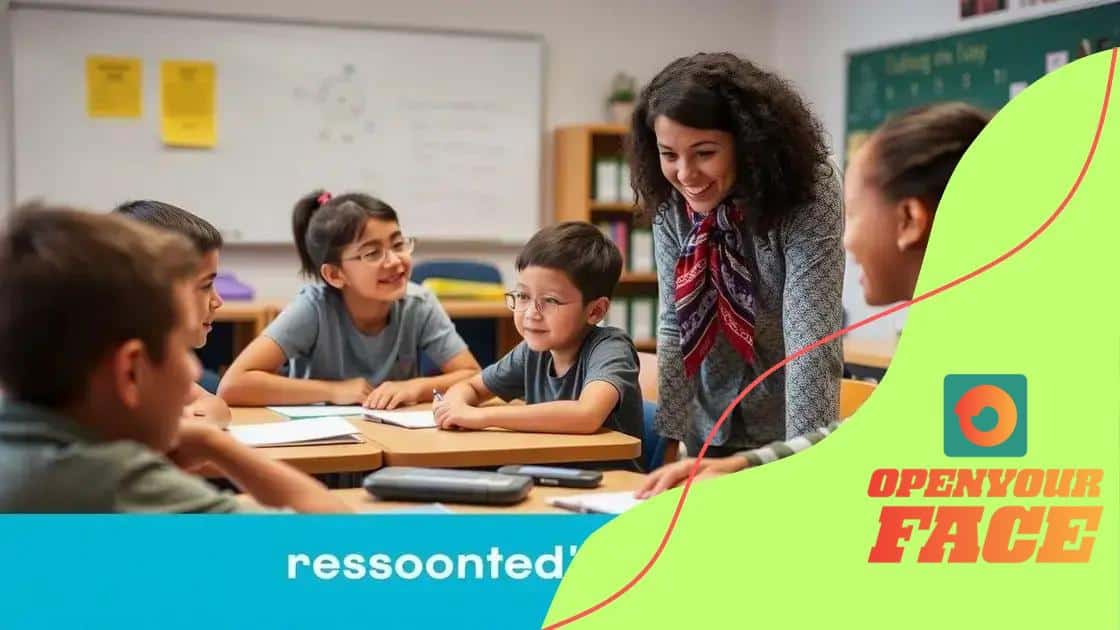
The benefits of personalized learning paths for K–12 students include tailored educational experiences that enhance engagement, motivate learners, and address individual strengths and weaknesses through adaptive instruction and supportive technologies.
Benefits of personalized learning paths for K–12 students are becoming increasingly apparent as educators seek ways to enhance student engagement and achievement. Have you ever thought about how tailoring education to individual strengths could change a child’s learning experience?
Understanding personalized learning paths
Understanding personalized learning paths is essential for creating an effective educational experience for K–12 students. These paths adapt learning to fit individual student needs, allowing them to progress at their own pace.
By focusing on unique strengths and weaknesses, personalized learning paths provide opportunities for deeper engagement. They consider factors like learning preferences, interests, and readiness, ensuring students receive tailored instructional methods.
Key Components of Personalized Learning Paths
Personalized learning paths comprise several critical elements:
- Assessment of student needs and learning styles.
- Utilizing technology to track progress and adjust learning trajectories.
- Flexible learning environments that adapt to various situations.
- Regular feedback for both students and educators to inform instruction.
These components work together to create an educational journey that feels relevant and meaningful to each student. For instance, technology can offer adaptive assessments. This means as a student answers questions, the difficulty can change based on their performance. The more engaged they feel, the better their educational outcomes are likely to be.
Furthermore, teachers play a vital role in implementing personalized learning paths. They can guide students, providing customized support and encouragement. They help students set goals based on their specific learning needs. This collaboration fosters a proactive learning attitude, encouraging students to take ownership of their education.
The Benefits of Personalized Learning
One of the primary benefits of these learning paths is improved student motivation. When students see their unique learning targets and feel successful achieving them, it boosts their confidence.
Moreover, as students progress through their paths, teachers can identify trends and adjust instruction. This leads to a more efficient learning process. Instead of a one-size-fits-all model, personalized learning paths emphasize individual student needs.
The impact on student engagement
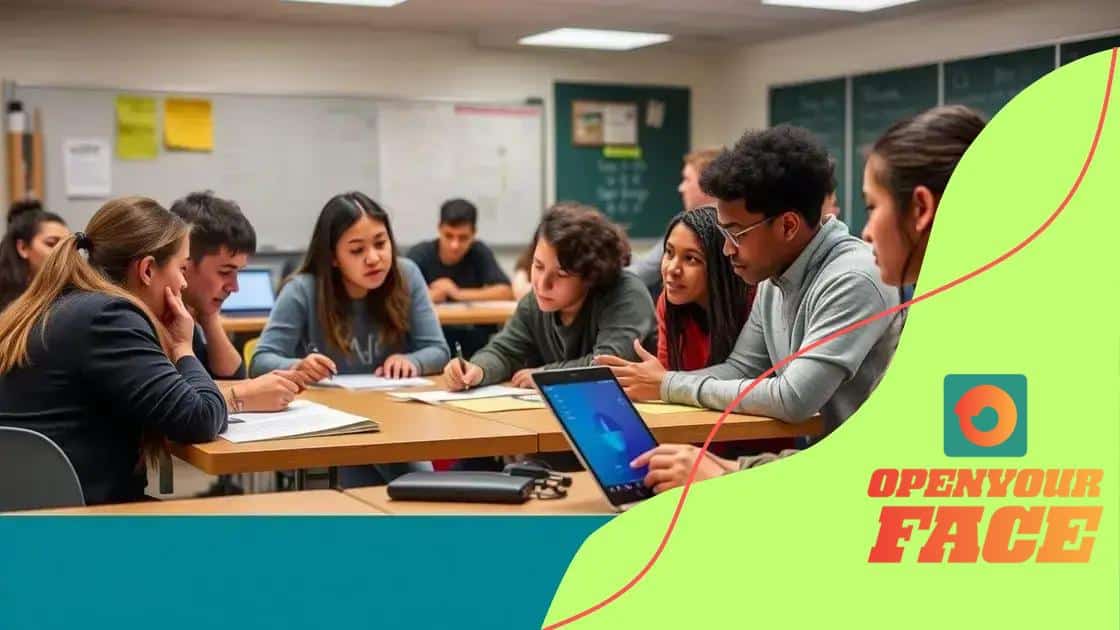
The impact of personalized learning paths on student engagement is profound and essential for today’s educational landscape. When students have a learning experience tailored to their unique needs, they are more likely to be motivated and invested in their education.
Engagement arises from the ability to focus on personal interests and goals. By allowing students to choose learning topics that resonate with them, educators can spark a genuine interest in the material. This tailored approach often leads to higher levels of enthusiasm in the classroom.
Elements Influencing Engagement
Several key factors influence how personalized learning paths enhance student engagement:
- Choice in selecting learning materials and topics.
- Opportunities for collaboration with peers.
- Frequent feedback from teachers.
- Access to technology that supports their learning journey.
When students choose what they want to learn about, they create a connection to the material. This choice fosters a sense of ownership that can dramatically improve their overall learning experience. Additionally, incorporating technology allows students to explore subjects in-depth and at their own pace, which further strengthens their engagement.
Personalized learning paths also encourage collaboration among peers. Working together on projects or discussing insights with classmates can deepen understanding and maintain interest. When students feel like they are part of a learning community, their commitment to engaging in that environment increases significantly.
The Role of Feedback
Feedback plays a crucial role in student engagement. Regular check-ins provide opportunities for students to reflect on their progress. When students receive constructive feedback, they can adjust their strategies to improve and meet their learning objectives. This ongoing communication ensures that students remain aware of their achievements, driving them to stay engaged in the learning process.
In conclusion, the impact of personalized learning paths on student engagement is significant. By integrating choice, collaboration, and constructive feedback, educators can create an environment that keeps students excited about learning. Ultimately, this approach empowers students to take charge of their educational journeys, leading to more successful outcomes.
Tailoring education to individual needs
Tailoring education to individual needs is a critical aspect of personalized learning paths. By recognizing that no two students are alike, educators can create a more effective learning experience that aligns with each learner’s strengths, weaknesses, and interests.
When students receive instruction designed specifically for them, they engage more deeply with the material. This personalized approach sets the stage for improved understanding and retention of knowledge. For instance, a student who struggles with reading comprehension may benefit from using visual aids or interactive tools that help break down the text into manageable parts.
Strategies for Tailoring Education
Several effective strategies can be used to tailor education to individual needs:
- Assessment tools that identify learning styles and preferences.
- Flexible groupings for collaborative work based on shared interests.
- Access to diverse resources tailored to varying skill levels.
- Continuous feedback loops to adjust teaching methods.
By implementing these strategies, teachers can better meet their students’ needs. Understanding how each student learns allows educators to provide support that ultimately leads to greater achievements. For instance, using technology to create varied assignments helps cater to different learning paces, keeping every student engaged.
Moreover, adjusting the pace of lessons is crucial. Some students may grasp concepts quickly, while others may need more time to fully understand them. Allowing students to progress at their own speed fosters a sense of security and encourages them to take risks in their learning.
Creating a Supportive Environment
A supportive environment is essential for tailoring education effectively. When students feel valued and understood, their confidence grows. Teachers who build positive relationships with their students can encourage open communication. This way, students feel comfortable sharing their challenges and successes, forming the foundation for a collaborative educational experience.
Tailoring education also involves providing choices in how students demonstrate their understanding. Allowing them to choose between writing an essay, creating a presentation, or developing a project helps cultivate engagement and enthusiasm for learning. Students take pride in their work when they can express themselves in ways that resonate with their interests.
Challenges in implementing personalized learning
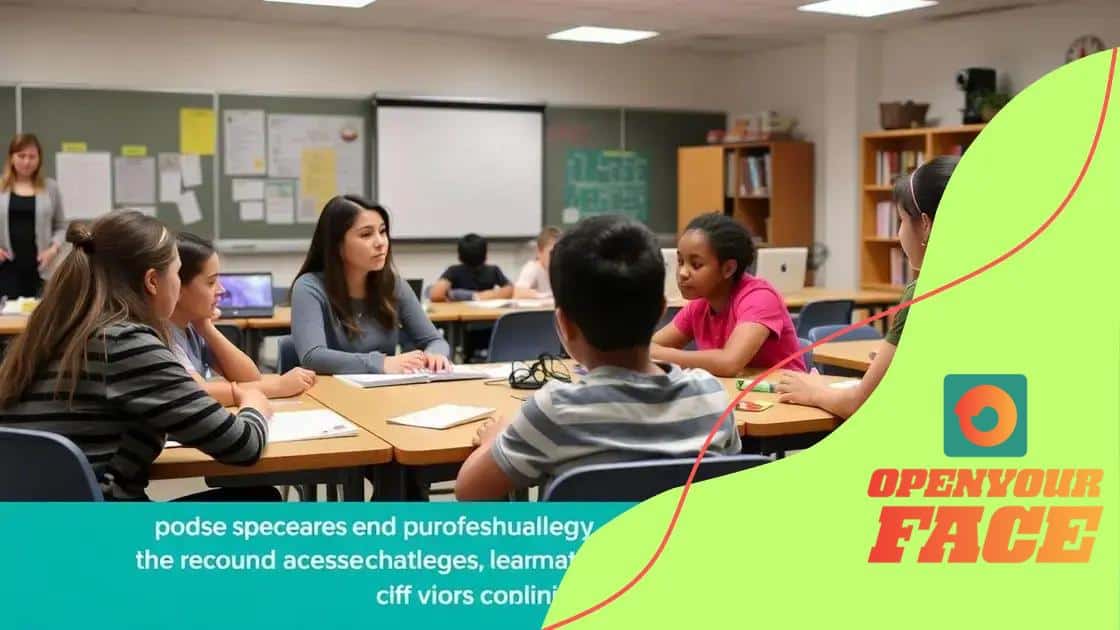
Implementing personalized learning can be transformative, but it also comes with challenges that educators must navigate. Understanding these obstacles allows schools to develop strategies for successful implementation.
One of the primary challenges educators face is the need for adequate training. Teachers must understand how to effectively use technology and learning tools to create personalized paths. Without this knowledge, the implementation can fall short of its potential.
Common Challenges in Implementation
Several common challenges arise when implementing personalized learning:
- Insufficient professional development for teachers.
- Limited access to technology and resources.
- Diverse student needs and varying learning speeds.
- Resistance from students or parents unfamiliar with new methods.
Access to technology is crucial for personalized learning. Schools often struggle with outdated equipment or lack the software necessary for effective implementation. If students cannot access the tools that facilitate personalized learning, it undermines the entire approach.
Another significant challenge is meeting diverse student needs. Every student learns differently, and catering to varying levels of ability can strain resources and require careful planning. Teachers need support and collaboration to effectively manage classrooms with diverse needs.
Overcoming Resistance
Resistance can also come from students or parents who are unsure of or skeptical about personalized learning. Education systems need to communicate clearly about the benefits and processes involved to build trust and coherence among all stakeholders.
As with any significant change, gathering feedback is essential for overcoming these obstacles. Schools can create pilot programs to test personalized learning approaches. This allows them to identify problems early on and make necessary adjustments. Collaboration among teachers, administrators, and families can ensure a smoother transition.
By addressing these challenges proactively, schools can create a supportive environment for personalized learning. With thorough planning, training, and communication, the barriers can be overcome, leading to more effective education.
Future trends in personalized learning for K–12
The future of personalized learning for K–12 students looks promising as educational technologies evolve and teaching methods adapt. With ongoing advancements, educators are finding new ways to engage students and meet their unique needs.
One significant trend is the increasing use of artificial intelligence (AI) in education. Tools that leverage AI can analyze student performance data to provide insights and tailored learning experiences. This technology can suggest resources, adjust lesson plans, and offer feedback in real time, making learning more efficient.
Emphasizing Student Agency
The concept of student agency is gaining traction in personalized learning. This approach encourages students to take control of their own learning journeys. By setting goals and selecting learning paths that interest them, students are more likely to remain motivated and engaged.
Another trend involves blended learning environments. These combine traditional classroom settings with online components, allowing for individualized pacing. Students can work at their own speed, accessing digital resources outside of the classroom to reinforce concepts learned during face-to-face instruction.
Focus on Social-Emotional Learning
The shift towards social-emotional learning (SEL) is another critical trend. Schools are recognizing the importance of developing skills such as empathy, self-regulation, and collaboration alongside academic content. Personalized learning plans that incorporate SEL create a holistic educational experience that caters to the whole student.
Moreover, educators are embracing project-based learning, which aligns well with personalized learning. This instructional method allows students to explore real-world problems, work collaboratively, and apply their skills in meaningful ways. By engaging in projects that reflect their interests, students become more invested in their education.
As these trends continue to evolve, the role of educators will also change. Teachers will become facilitators, guiding students through their personalized learning experiences while offering support and resources. The focus will shift from merely delivering content to cultivating a learning environment that fosters curiosity and collaboration.
In conclusion, the future of personalized learning for K–12 education is bright as technology continues to advance and educational practices evolve. We can expect more adaptive learning environments tailored to meet individual student needs. By focusing on strategies like student agency, social-emotional learning, and project-based approaches, educators can create engaging experiences that foster a love for learning. As we address the challenges and embrace emerging trends, personalized learning will empower students to take control of their educational journeys, ultimately leading to improved outcomes.
FAQ – Frequently Asked Questions about Personalized Learning for K–12
What is personalized learning?
Personalized learning tailors educational experiences to meet the individual needs, interests, and goals of each student, fostering engagement and ownership of learning.
How does technology enhance personalized learning?
Technology, including AI tools, helps analyze student data, provide tailored resources, and offer real-time feedback, making learning more effective and engaging.
What challenges do teachers face when implementing personalized learning?
Teachers often encounter obstacles like insufficient training, limited technology access, and varying student needs, which require support and strategies to overcome.
What trends are shaping the future of personalized learning?
Future trends include integrating social-emotional learning, emphasizing student agency, and using project-based learning to create engaging, real-world educational experiences.
